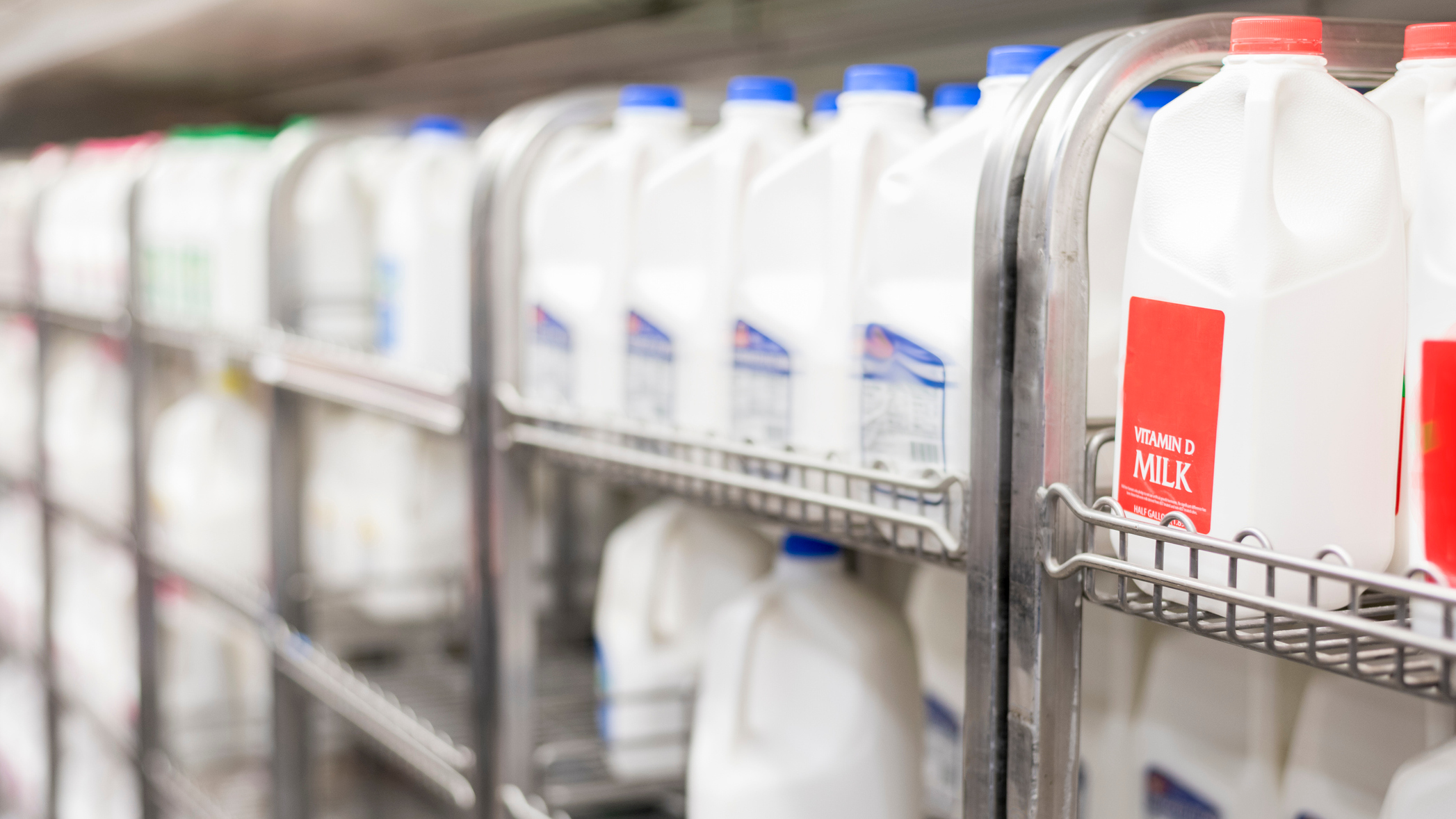Why Milk Is One Of The Best Items To Donate To Food Banks
Today is Giving Tuesday, a day that promotes charitable efforts during the holiday season. In between donating to your friends' Facebook fundraisers and kids' school coat drives, you might also be stockpiling canned goods or cereal for your local food bank. While that's admirable, there's probably an item that the food bank needs even more than rice or tuna fish: milk.
Anti-hunger organization Feeding America and The Great American Milk Drive are getting the word out this season that milk is one of the most requested yet least donated items at American food banks. Through its donation website, the drive aims to provide more gallons of milk to Feeding America's network of 200 food banks and 60,000 food pantries. In case you wondered, yes, The Great American Milk Drive is affiliated with the National Dairy Council and MilkPep, which are funded by the nation's milk companies. They most certainly have a horse in this race.
That aside, there is a real demand for milk at food banks. According to The Great American Milk Drive stats, "people served by food banks receive the equivalent of less than 1 gallon per person per year." At the food bank where I volunteer on Mondays, I can say that the demand for milk generally outpaces our supply. Most people don't think to donate milk because it's perishable—our food bank does have fridges!—and the milk that's donated from grocery stores often has a sell-by date that's the same as the day the food bank receives it. (You can keep milk past its sell-by date of course, but not for much more than five days.)
This is all to say that if you're considering dropping off a box of food at your area food bank for the holidays, maybe throw a gallon or two of milk in there. (Or donate to The Great American Milk Drive online; donations will stay in your local area.) That milk will likely be more appreciated than a nearly expired can of water chestnuts or the pantry's umpteenth can of French-cut green beans.
